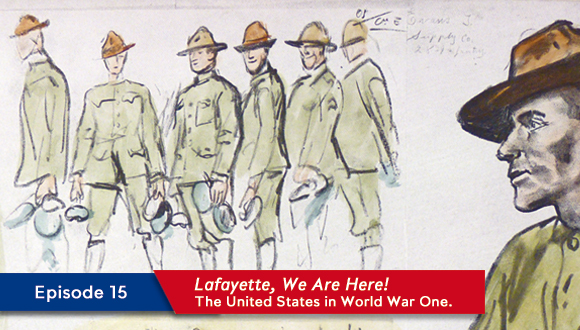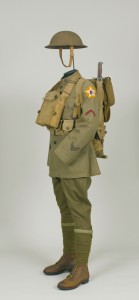Settling In – The Doughboys in France
The U.S. Army Uniform
The Doughboys, a term used to designate a member of the American Expeditionary Forces in WWI, passed through the port of Boulogne-sur-Mer in 1917. The French magazine Illustration described them as follows: «In their olive drab uniform, their broad-brimmed felt hat, their riffle belt with plenty of pouches, their young Western look, they brought an unprecedented picturesque touch of colour to our war scenery».
The U.S. Army uniform’s clothing was made of wool and consisted of an olive drab blouse coat, O.D. shirt trousers and leggings later replaced with puttees and trench shoes. The buttons wear the inscription US ARMY. Upon their arrival, the Doughboys wore a hat campaign, a broad-brimmed with a high crown with four dents often reshaped to form a pinched Montana peak. Hat cords indicated the unit: blue for the Infantry, red for the Artillery and yellow for the Cavalry. The campaign hat was gradually replaced with the overseas cap, a headgear often inspired from British and French patterns. In battle, the American soldier wore the U.S. M1917 Helmet, a near identical version of the British Mk.I steel helmet.
The rifle belt with cartridges pouches, the personal items roll and the haversack were made of cotton. The haversack came with the pack carrier with wire cutters, a canteen and a Model 1910 entrenching tool. On the flap, a bayonnet and a small box respirator very similar to the British S.B.R.





Ajouter un commentaire